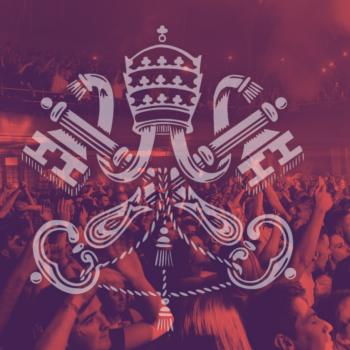I have been writing on some quite diverse topics recently, including “faith on the borderlands,” and Christianity in Early Britain. I hadn’t actually intended to bring them together, but they appear to be merging of their own accord.
This may be a dumb question, but has anyone written a book on current and former slaves as vehicles for evangelization? I don’t just mean slaves becoming preachers or ministers in the land where they had always lived, but rather serving to transport the faith to wholly new territories, perhaps even introducing it for the first time.
The best-known example is Patrick, seized as a boy in Britain in the early fifth century, and carried to pagan Ireland. He escaped, but returned to convert the land of his captivity.
That was anything but an unusual experience at the time, as the borders of the Roman Empire crumbled in the West, while eastern territories too were prone to constant warfare and barbarian raids – and those raids were usually intended to collect slaves. Contemporary saints’ lives show how frequently bishops and clergy sought to relieve and ransom Christian captives in barbarian hands, suggesting that this must have been a very commonplace situation, in Europe as well as the Middle East.
The Caucasian land of Georgia produces the astonishing story of Nino, who was probably born in Cappadocia. Accounts of her life vary, but a strong early tradition says she was brought to Georgia as a slave around the year 300. When the queen became sick, Nino healed her, and that in turn led to a royal conversion. Georgia then became Christian, which it remains to this day. Nino is remembered as “the Enlightener”, “equal to the apostles,” and she remains Georgia’s national heroine.
Incidentally, I tend to believe the story of Nino’s early slavery for this reason. When a medieval writer was describing a venerated saint, it was natural to make her or him as aristocratic or royal as possible, preferably the sibling of some famous Christian leader. You did not invent a story of a slave past unless it was rooted in some very strong authentic tradition.
Although this story does not really touch on evangelization, there is also a famous account of the fourth century saint Malchus, written by St. Jerome c.390. Malchus was a Syrian monk who was on pilgrimage c.310 when he was taken as a slave by desert raiders, “Saracens” or “Ishmaelites.”
In a harrowing passage, Malchus describes his capture, in an episode that must have been commonplace around the borders at this time: “There were in my company men, women, old men, youths, children, altogether about seventy persons. All of a sudden the Ishmaelites on horses and camels made an assault upon us, with their flowing hair bound with fillets, their bodies half-naked, with their broad military boots, their cloaks streaming behind them, and their quivers slung upon the shoulders. They carried their bows unstrung and brandished their long spears; for they had come not to fight, but to plunder. We were seized, dispersed, and carried in different directions. I, meanwhile, … was assigned, along with another poor sufferer, a woman, to the service of one and the same owner. We were led, or rather carried, high upon the camel’s back through a desert waste, every moment expecting destruction, and suspended, I may say, rather than seated. Flesh half raw was our food, camel’s milk our drink. At length, after crossing a great river we came to the interior of the desert, where, being commanded after the custom of the people to pay reverence to the mistress and her children, we bowed our heads. Here, as if I were a prisoner, I changed my dress, that is, learnt to go naked, the heat being so excessive as to allow of no clothing beyond a covering for the loins.”
His new owner was a decent man according to his lights, and rewarded Malchus’s faithful service by giving him another slave to be his wife. Both Malchus and the wife were however pledged to celibacy, and ultimately succeeded in escaping. It would have been easy to imagine the story developing differently, so that the esteemed slave might ultimately have won converts among the “Ishmaelites.”
I also think of the conversion of the Norse between the ninth and eleventh centuries. They raided heavily in the British Isles, and the Irish slaves they took have left a powerful genetic marker, especially in the new colony of Iceland. When we read the sagas, we see how these Celtic Christians familiarized Scandinavians with the faith, long before formal conversion. The defeated, even the enslaved, ultimately gain cultural ascendance over their conquerors. The poet Horace was referring to a similar phenomenon when he wrote that, although defeated politically and militarily, it was none the less captive Greece that took all-powerful Rome under its cultural sway: Graecia capta ferum victorem cepit.
We are dealing with an important phenomenon here, and one that certainly extends into the history of Atlantic slavery. If nobody has ever studied it formally, I’d like to offer a name for the phenomenon of former slaves rising to high honor among their owners, and spreading their faith.
How about Daniel Syndrome?















